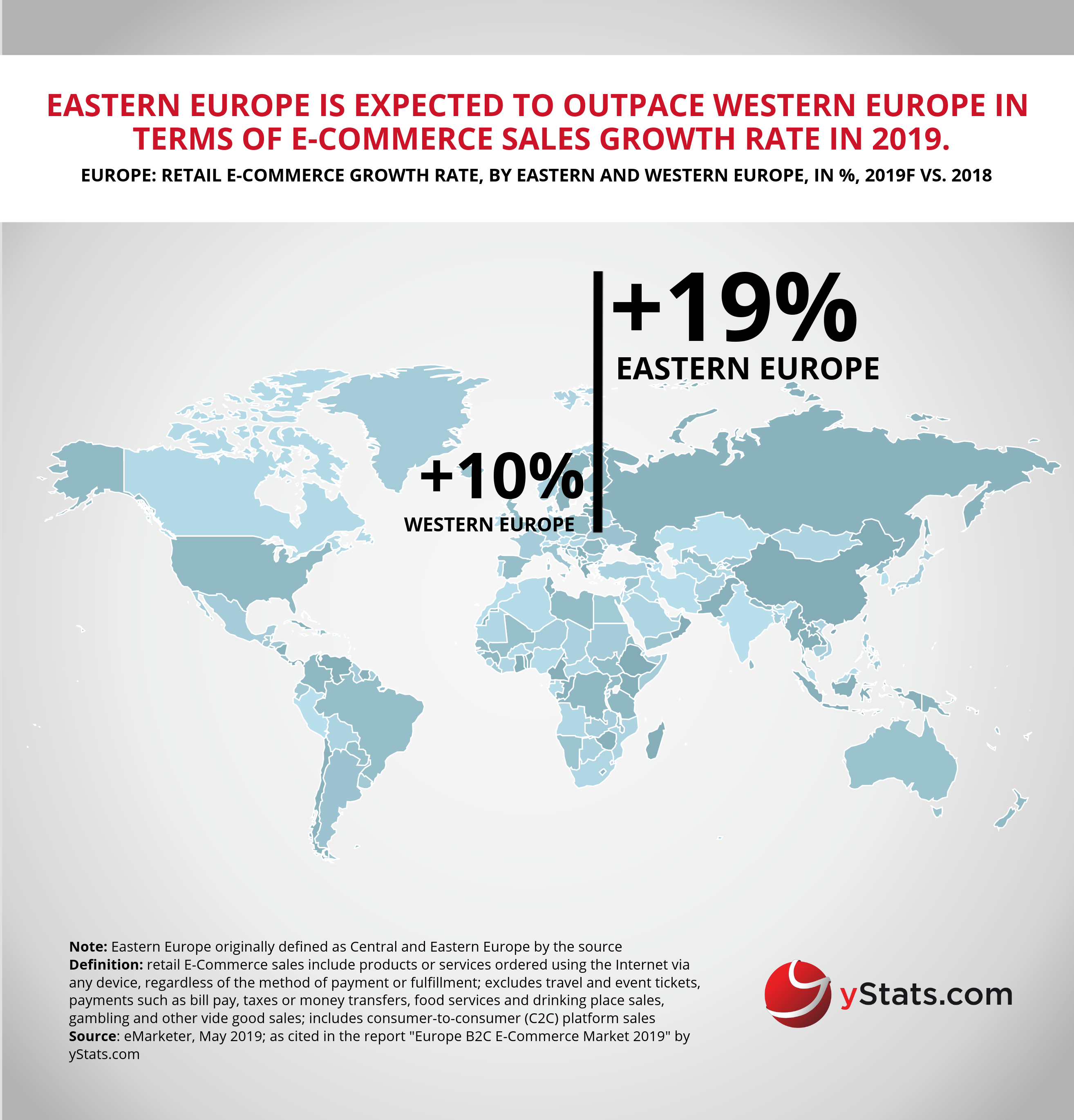“Europe B2C E-Commerce Market 2019” is a new report published by yStats.com, a leading Hamburg-based secondary market research firm specialized in online commerce and payments intelligence. The report reveals key market trends and developments in European online retail and cites a projection that digital commerce sales in this region will continue to grow at a double digit rate in 2019.
Europe’s B2C E-Commerce market is the third largest worldwide
Europe has the world’s third largest regional B2C E-Commerce market as of 2019, with a share of close to one-fifth of global online retail sales, reports yStats.com. Although some of the region’s developed economies already surpassed the 10% milestone in online share of overall retail sales, signalling advancing maturity, Europe’s digital commerce is nevertheless projected to maintain a double-digit growth rate in 2019. The upward trend is driven by rapid increases in online sales in the emerging markets of Eastern Europe, as well as continued growth of digital commerce in Western Europe.

Key online shopping trends in Europe
The top B2C E-Commerce trends in Europe include the rise of cross-border and mobile shopping, as well as the development of omnichannel and social commerce. M-Commerce sales outpace the growth of computer-based online sales in Europe, resulting in a growing share of B2C E-Commerce sales generated via smartphones and tablets. Moreover, cross-border E-Commerce revenues are on the rise. The percentage of EU’s digital buyers making purchases from sellers in other countries reached close to 50% in 2018, up by several percentage points from 2017, according to the figures referenced in the yStats.com report. As consumers increasingly shop via digital channels, retailers are launching omnichannel services such as click-and-collect, especially popular in Europe’s largest B2C E-Commerce market, the UK.
Amazon tops the E-Commerce player ranks in Western Europe
In terms of competition, Amazon occupies the leading ranks by sales in the countries of Western Europe, including the UK, Germany, France, Italy and Spain. In Eastern Europe, the US-based online retailer’s hold is significantly less strong. Local E-Commerce marketplaces, retailers and comparison shopping websites are in the lead instead in this sub-region, with Chinese cross-border platforms like AliExpress also gaining popularity.


